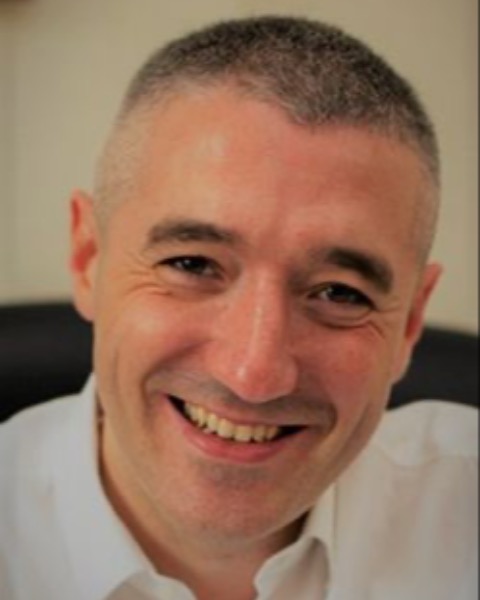Back
Poster, Podium & Video Sessions
Video
V03: Urolithasis/Endourology
V03-09: Thulium Fiber Laser: A Universal Device in Urology. From bench to bedside.
Friday, May 13, 2022
2:20 PM – 2:30 PM
Location: Video Abstracts Theater
Dmitry Enikeev*, Mark Taratkin, Camilla Azilgareeva, Anastasia Shpikina, Leonid Rapoport, Roman Sukhanov, Petr Glybochko, Moscow, Russian Federation

Dmitry Enikeev, MD
Professor
Institute for Urology and Reproductive Health, Sechenov University, Moscow
Video Presenter(s)
Introduction: A new thulium fiber laser (TFL) has been recently developed as a novel surgical tool with multiple applications in urology. The latest modification of the device incorporates two modes for surgery – quasi-continuous (QCW, for soft tissue surgery) and SuperPulsed (SP, for lithotripsy). Evaluation of the utility of the novel device began with in-vitro comparison of TFL with conventional Ho:YAG. After clinical approval, device efficacy was assessed for soft tissues (BPH, NMIBC) and stones.
Methods: This prospective clinical trial started following local IRB approval. For TFL enucleation of the prostate (ThuFLEP), TFL (NTO IRE-Polus, Russia) in QCW mode with 600-µm laser fiber and 26 Ch resectoscope (Karl Storz, Germany) with continuous irrigation (0.9% saline) was used. TFL en bloc resection of bladder tumor (TFL-ERBT) was performed using the following settings: QCW; 1.0 J; 10 W. Lithotripsy was performed with TFL using 200-, 400- and 600-µm fibers in SP mode. Stone-free rate (SFR) was assessed with low-dose computed tomography 3 months after.
Results: ThuFLEP was performed in 1392 patients, TFL-ERBT in 118 cases, and TFL lithotripsy (PCNL, RIRS, URS, bladder) was performed in 321 patients. In the ThuFLEP group median prostate volume was 80 (IQR 60; 105) cc. Qmax and IPSS before surgery were 9.6±2.6 and 22.9±1.8, respectively. Mean surgery duration was 70.5±31.0 min, whereas the mass of resected tissue was 69.8±34.7 g. Mean catheterization time was 1.7±0.8 days; mean hospital stay was 3.7±1.0 days. PVR, Qmax, IPSS and QOL all significantly improved at 3 months after surgery (p <0.001). TFL-ERBT was performed in 118 patients with detrusor rate of 91.6%. RFS at 6 months was 91.5%. Of 321 patients with urinary calculi treated with TFL, 153 had kidney stones (median stone volume – 279.6 (IQR, 139.4–615.8) mm3, mean density – 1020±382 HU), 149 had ureter stones (median stone volume - 179 (IQR, 94–357) mm3, mean density – 985±360 HU) and 19 had bladder stones (mean size 22.2 mm, mean density – 1050 HU). Stone-free rate was 92%.
Conclusions: TFL shows high efficiency and acceptable safety profile in the treatment of urinary stones, NMIBC and BPH. The combination of SuperPulsed and quasi-continuous modes within a single device allowed for developing a universal tool for urologic surgery. However, further studies are necessary to assess the comparative efficacy of this surgical modality with standard options offered by guidelines.
Source of Funding: None
Methods: This prospective clinical trial started following local IRB approval. For TFL enucleation of the prostate (ThuFLEP), TFL (NTO IRE-Polus, Russia) in QCW mode with 600-µm laser fiber and 26 Ch resectoscope (Karl Storz, Germany) with continuous irrigation (0.9% saline) was used. TFL en bloc resection of bladder tumor (TFL-ERBT) was performed using the following settings: QCW; 1.0 J; 10 W. Lithotripsy was performed with TFL using 200-, 400- and 600-µm fibers in SP mode. Stone-free rate (SFR) was assessed with low-dose computed tomography 3 months after.
Results: ThuFLEP was performed in 1392 patients, TFL-ERBT in 118 cases, and TFL lithotripsy (PCNL, RIRS, URS, bladder) was performed in 321 patients. In the ThuFLEP group median prostate volume was 80 (IQR 60; 105) cc. Qmax and IPSS before surgery were 9.6±2.6 and 22.9±1.8, respectively. Mean surgery duration was 70.5±31.0 min, whereas the mass of resected tissue was 69.8±34.7 g. Mean catheterization time was 1.7±0.8 days; mean hospital stay was 3.7±1.0 days. PVR, Qmax, IPSS and QOL all significantly improved at 3 months after surgery (p <0.001). TFL-ERBT was performed in 118 patients with detrusor rate of 91.6%. RFS at 6 months was 91.5%. Of 321 patients with urinary calculi treated with TFL, 153 had kidney stones (median stone volume – 279.6 (IQR, 139.4–615.8) mm3, mean density – 1020±382 HU), 149 had ureter stones (median stone volume - 179 (IQR, 94–357) mm3, mean density – 985±360 HU) and 19 had bladder stones (mean size 22.2 mm, mean density – 1050 HU). Stone-free rate was 92%.
Conclusions: TFL shows high efficiency and acceptable safety profile in the treatment of urinary stones, NMIBC and BPH. The combination of SuperPulsed and quasi-continuous modes within a single device allowed for developing a universal tool for urologic surgery. However, further studies are necessary to assess the comparative efficacy of this surgical modality with standard options offered by guidelines.
Source of Funding: None

.jpg)
.jpg)